Mysterious medieval cemetery unearthed in Wales
- Published
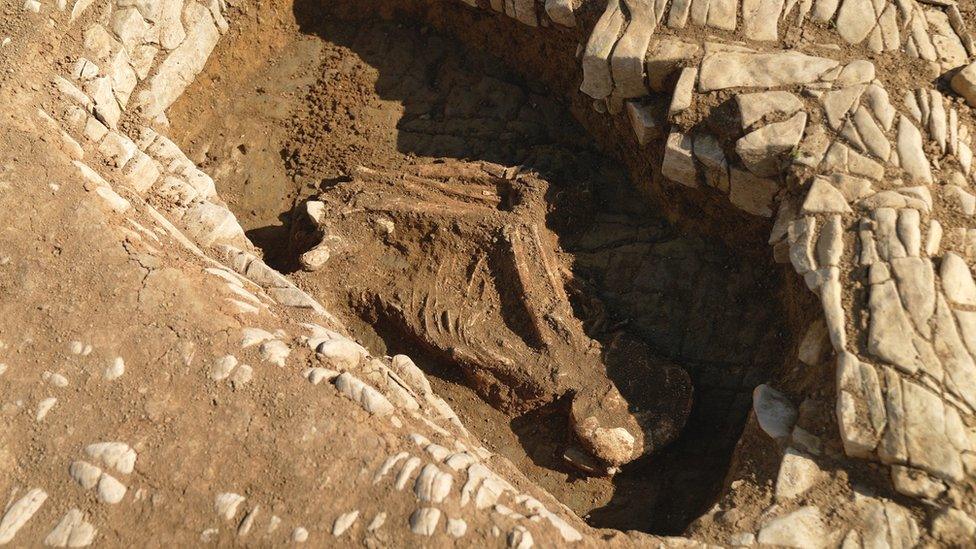
The skeletons are remarkably well preserved given their age
A rare, early medieval cemetery has been unearthed in Wales and it has left archaeologists scratching their heads.
It's thought to date to the 6th or 7th Century and 18 of the estimated 70 graves have been excavated so far.
Some of the well preserved skeletons have been found lying in unusual positions and unexpected artefacts are also emerging from the site.
The dig is starting to reveal more about this ancient community - but it's also raising questions.
The cemetery lies in an unremarkable field in the grounds of Fonmon Castle, close to the end of the runway at Cardiff airport.
Over two summers, a team has been busy carefully removing the thin layer of topsoil to expose the graves that were carved into the bedrock so long ago.
The excavation is featured on Digging for Britain on BBC 2 at 8pm on 4 January. The full series is already available on iPlayer.
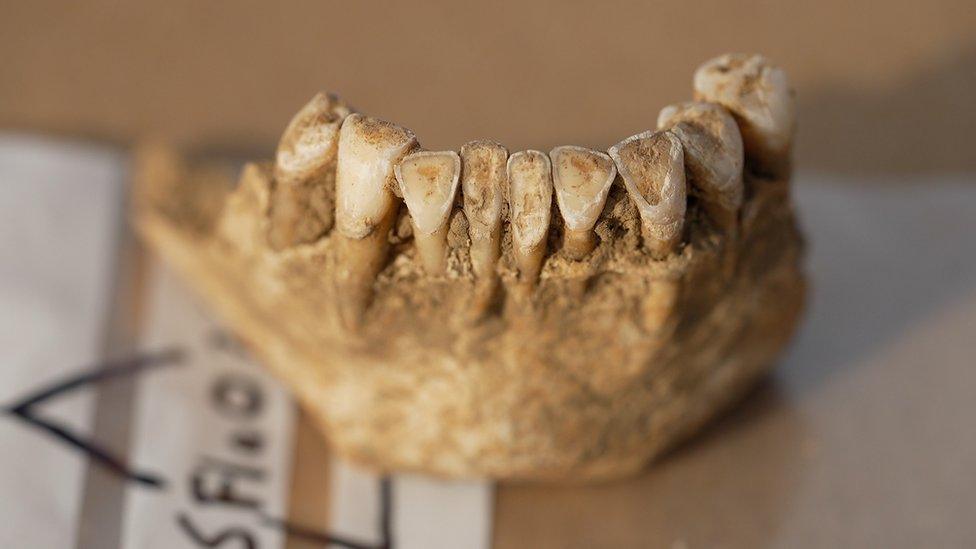
The front teeth from one of the skeletons are very worn
Summer Courts, an osteoarchaeologist from the University of Reading, says the skeletons are in good condition despite being around 1,500 years old.
She points to a skull that's just been excavated, which is providing clues about how these people lived and worked.
"We have some teeth that are very worn in a kind of a funny way that might indicate the use of teeth as tools," she says.
"Maybe for textile work, leather work or basketry - they're pulling something through their front teeth."
But some of the skeletons are posing a puzzle - they're lying in a whole variety of positions.
Some are flat on their backs, normal for the period, while others are placed on their sides, and a few are buried in a crouching position with their knees tucked up against their chest.
The archaeologists aren't sure what this means. Was the cemetery used over a long period of time as burial practices were changing? Or were some people being marked out as different?
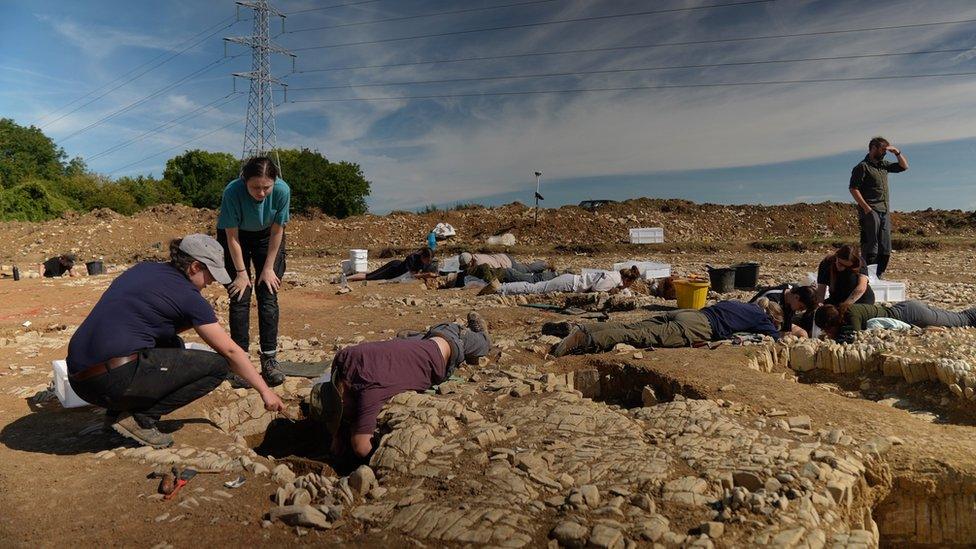
The team thinks there are about 70 graves at the site - 18 have been fully excavated so far
The items being found around the graves are also surprising and they show how life in the middle of the first millennium was very different from now.
Fragments of dishes and cups have been found, and splinters of animal bone that have been butchered and burnt. One item really brings this community to life: a tiny carved peg that may have been used as a marker for scoring in a game, perhaps something like we use in a cribbage board.
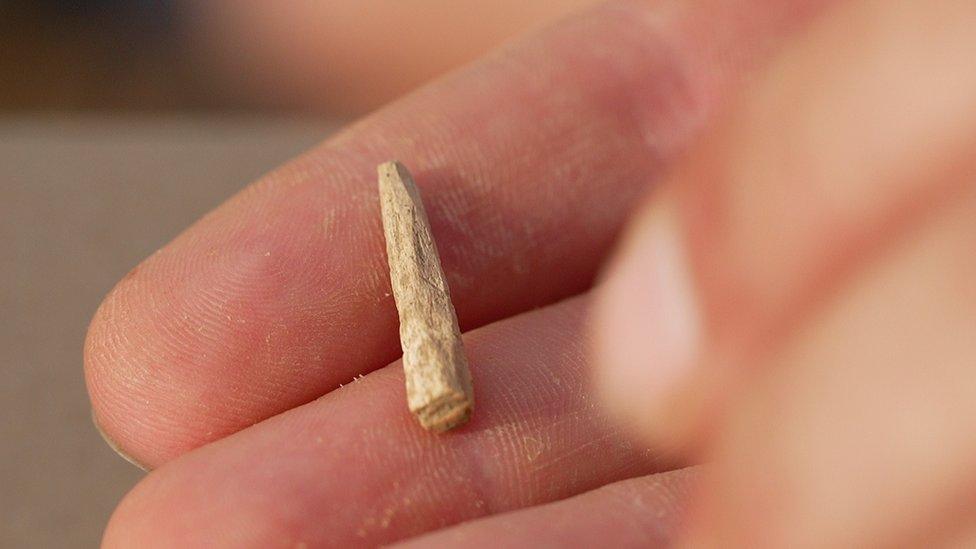
This small carved peg is made from animal bone and may have been used for a medieval gaming board
Dr Andy Seaman, a specialist in early medieval archaeology from the University of Cardiff - who is leading the digging team - says unlike cemeteries now, this doesn't seem to be just a place to dispose of the dead.
"We tend to think of graveyards as sort of enclosed spaces that we don't really go to, but they probably would have been quite central to life in the past," he explained.
"And it's not just a place for people being buried, but it's a place where communities are coming together: they are burying their dead, but they're also undertaking other forms of activity, and social practice, including eating and drinking - and feasting"
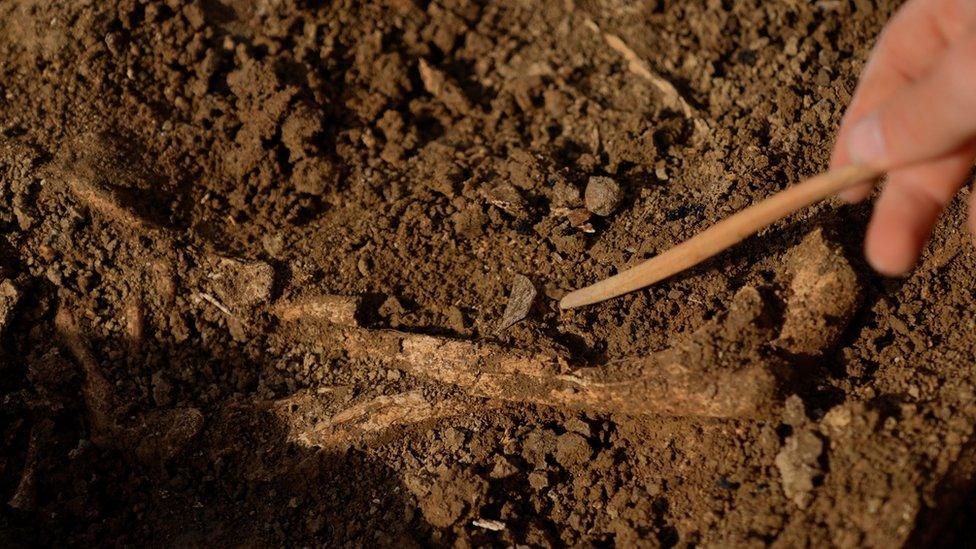
A tiny shard of glass imported from France was found in one of the graves
Most perplexing though is that the artefacts being discovered here suggest these people were far from ordinary.
While we're at the dig, an excited shout goes up: "I've just found a piece of glass."
It's lying in one of the graves.
"It's a rim shard, an ice-cream shaped cone vessel - very fine material, very fine glass… it's a really nice find," Andy Seaman says as he admires the fragment.
He thinks it's from the Bordeaux region in France - and it's not the only imported item, the team has also found pieces of pottery, possibly from North Africa.

The team will carry out a DNA analysis of the bones to find out more about this community
The quality of these finds suggests that the people there were of a high status.
Tudur Davies, from the University of Cardiff, says: "The evidence we've got here is that the people have access to very high quality imported goods, that you can only get through trading or exchange networks, with people with a lot of wealth, to bring it here.
"What exactly is going on? Who are these people being buried here?"
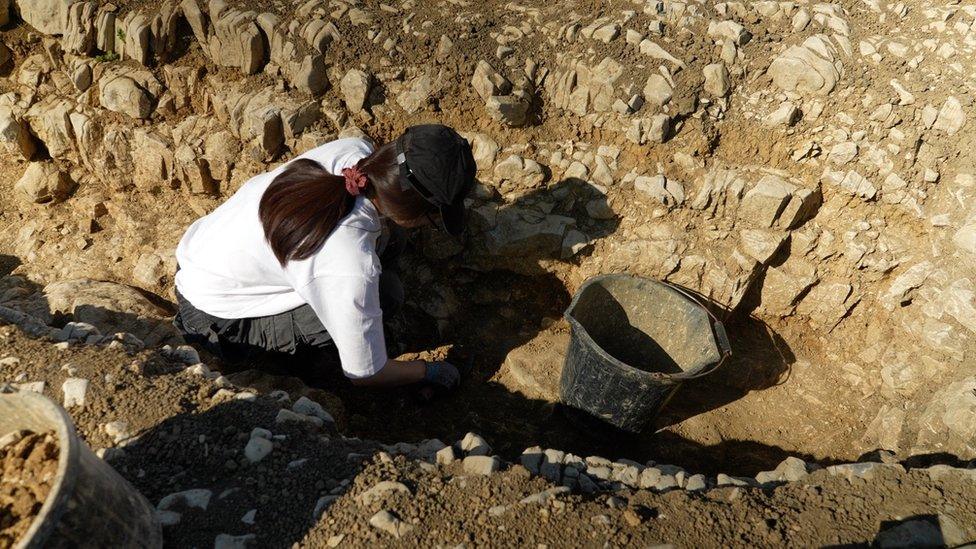
The artefacts suggest that the people buried at the cemetery may have been of high status
Further research is needed to get a more precise date for when the graveyard was in use, and DNA analysis will reveal more about the skeletons buried there.
The cemetery will provide a snapshot in time of both each individual and the community as a whole helping to shed more light on an era that we still know very little about.
But the questions about who actually lived and died here may take a lot longer to answer.
Follow Rebecca on X, formerly known as Twitter, external.